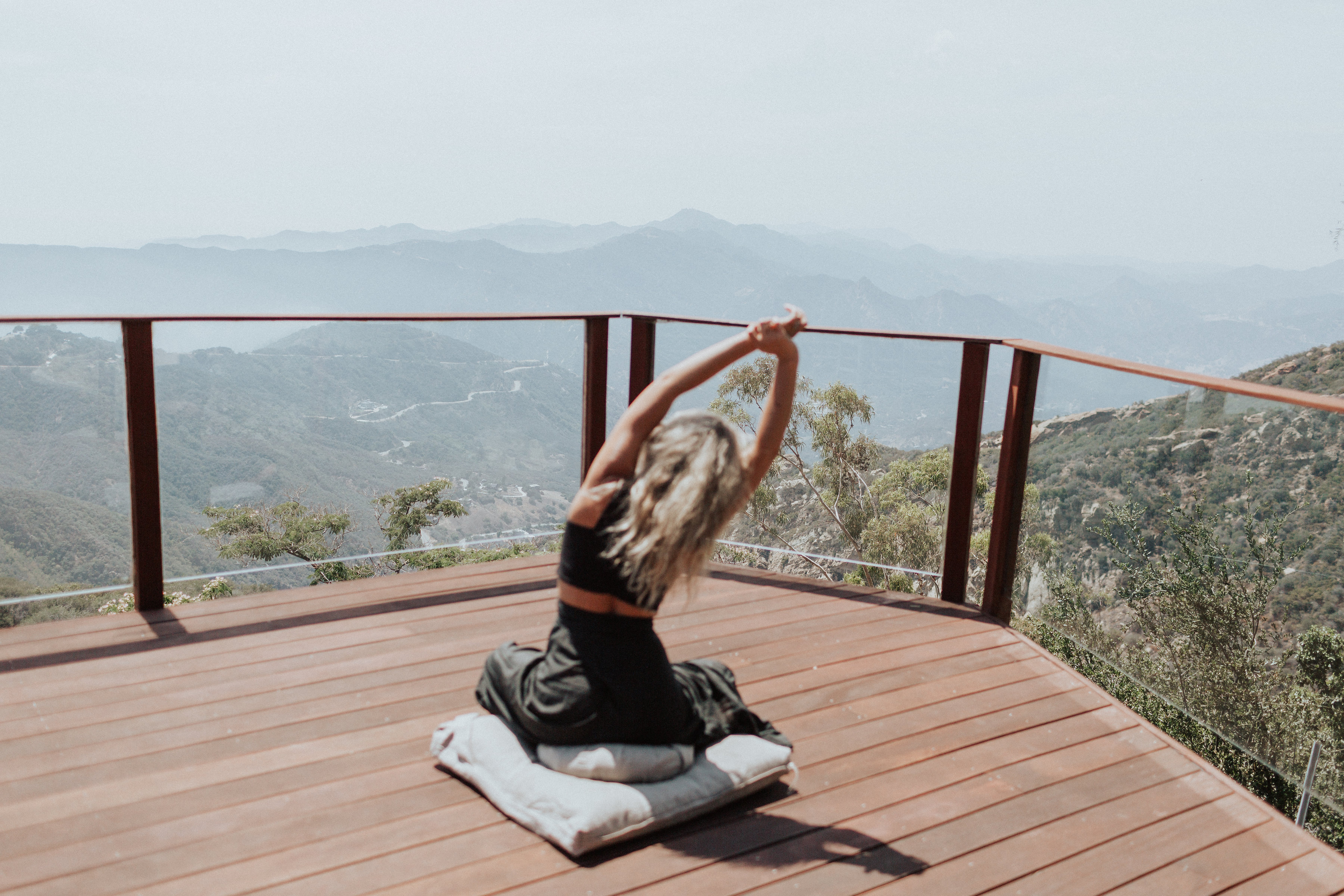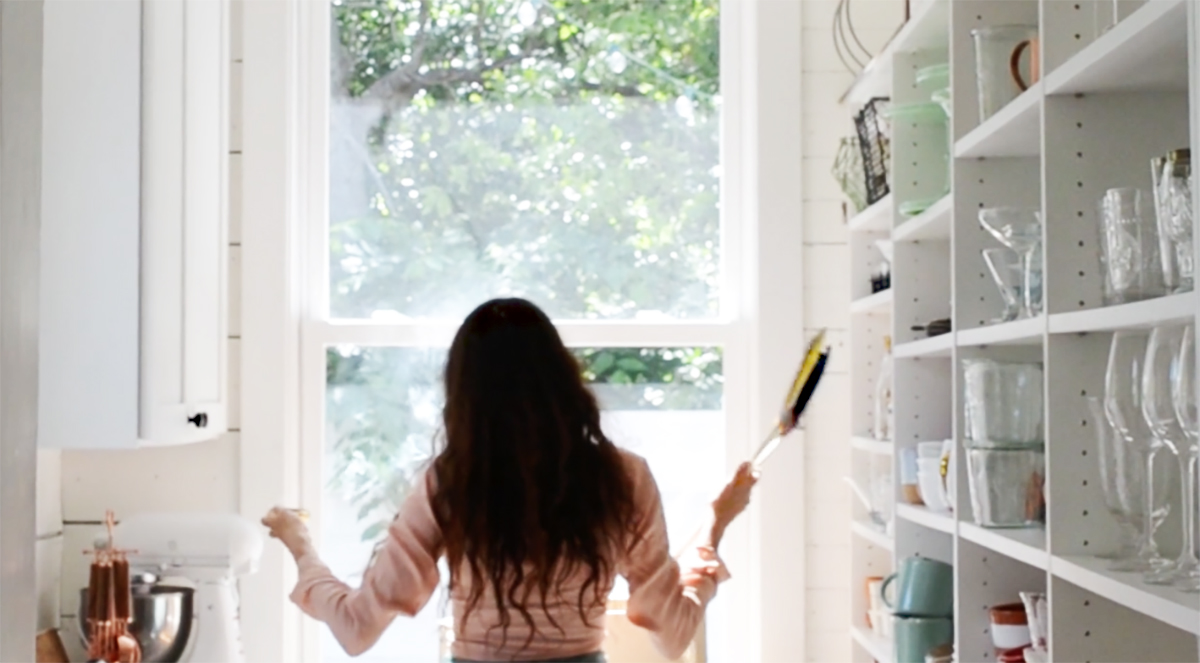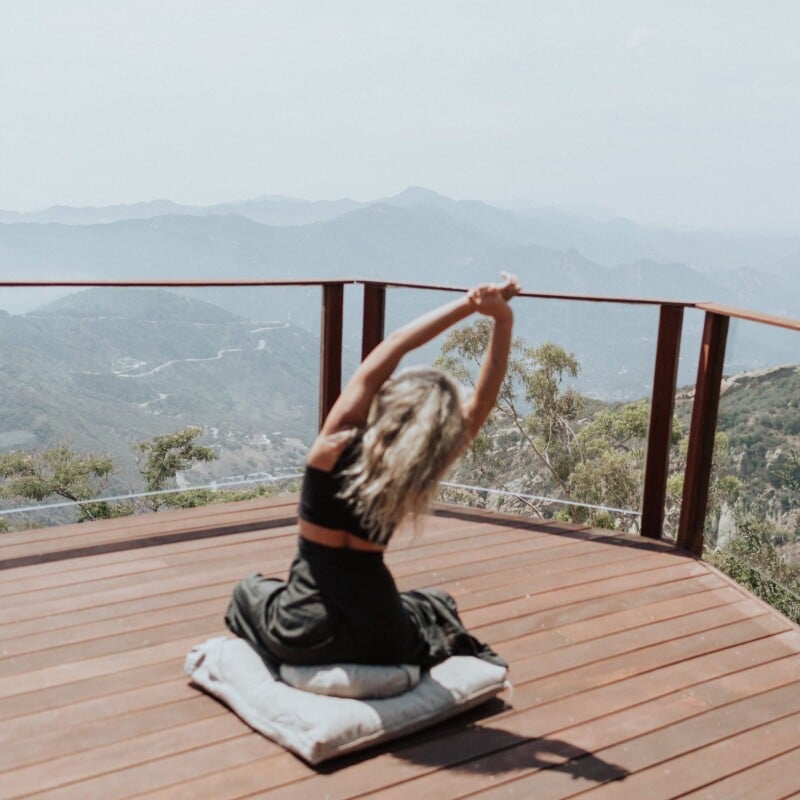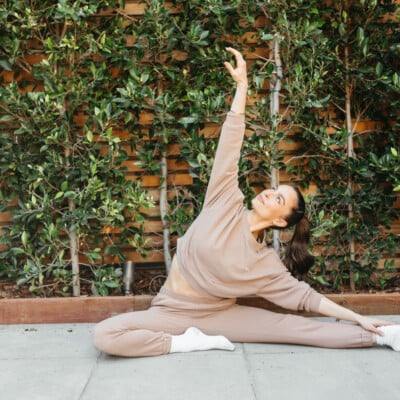Living in Los Angeles, I often find myself accidentally stumbling into “extreme wellness situations” — think networking events that turn into emotionally fueled kundalini yoga sessions and the $40 jar of Manuka honey sitting in my kitchen cabinet. But I wouldn’t call myself a wellness junkie. I’m skeptical by default, and nine times out of ten I’ll skip the turmeric latte or other trendy cure-all menu item for a burger and fries. The one exception where I’ve happily downed the wellness kool-aid is with meditation, and here’s how it happened.
I first tried the millennia-old practice about a year after I graduated from college. That first year in the real world had been more difficult than I could have ever braced myself for, and the transition into full time work (and moving in with a significant other for the first time) left me with anxiety and frayed nerves.
After a string of sleepless nights that left me feeling exhausted and unable to get out of my own head, I decided to download a guided meditation app. My expectations were characteristically low.
After a little practice, I was soon floored to discover that establishing a regular practice of mindfulness really did make a difference in my mindset.
Starting my day by spending 10 minutes getting connected to myself instead of feeling a bubbling sense of FOMO by looking at Instagram worked wonders. Grounding myself in this way gave me the room to live in the present without getting wrapped up by anxiety. Meditation has taught me so much about myself, including solid ways to get out of my own way and savor life’s little moments. So breathe in through your nose, out through your mouth, and keep reading to discover how you can, too.

Build a Strong Foundation
Like exercise or eating well, a meditation practice works best if you get into a regular groove. When I was just getting started, I committed myself to spending 10 minutes a day meditating for 30 days straight using the Headspace app. (The yearly membership is the best $100 I’ve ever spent on myself.) And while I didn’t feel any sudden shift, after a solid month of intentionally checking in with myself each day, I discovered I felt better. I was calmer, more in control of mood, and more confident in my ability not to let small things stick.
To be honest, I haven’t meditated for 30 days straight since then. But every time I slip out of my routine, I think back to that time. Reaping the benefits of meditation requires you to put in the work, so coming out of the gate strong by finding what works for you and really sticking to it is key.

image by Anthony Geathers for The New York Times
Being Uncomfortable Is Okay
One of the first things I learned when I started meditating was that I needed to lean into uncomfortable feelings. For me, meditation is not about emptying my mind of thoughts (because that’s not going to happen, let’s be real). It’s about acknowledging those thoughts and feelings — whether they be good, bad, or neutral — as they come up in the moment.
The trick is to then let those feelings go without getting caught up in them. Once you do that, you can focus on the savoring all of the wonderful things the present moment is offering you without feeling like you’re shoving anything under the rug.

image by claire huntsberger
Don’t Change Your Thoughts, Change Your Perspective
The only problem with that letting go thing I was just talking about? It’s damn hard. I am an admitted wallower, and it’s much easier for me to let myself sit in a bad mood or feeling than it is to let it go and move on. Meditation isn’t going to fix that bad habit, but what it has done is provided a framework for stepping back into the present moment.
By spending time focusing on the feeling of your breath or the physical sensations around you — your feet pressing into the floor and your back into the chair supporting you — those pesky thoughts become only momentary distractions. Sure, you may get caught up thinking about what you’re doing this weekend or an argument you had with your sister. But you’ll always have something rooted in the present to come back to. Each time you momentarily let go of a thought or feeling to come back to your breath you flex those mind muscles you’ll need to feel calm in difficult moments.

photographed by kimberly geneivieve
Believe in the Blue Sky
One of the most powerful things meditation has taught me is the idea of the blue sky.
Picture it: who you really are is that brilliant blue sky, and any clouds or storms (read: bad moods or negative thoughts) are just covering what is always there.
I find this philosophy completely liberating. By remembering this, I am able to understand that whatever I’m preoccupied with in life doesn’t define me. It’s just clouds passing over my clear sky. Which makes not getting wrapped up in that thought astronomically easier. And when I’m not getting wrapped up in myself and those heavy grey clouds, savoring every moment comes naturally.






